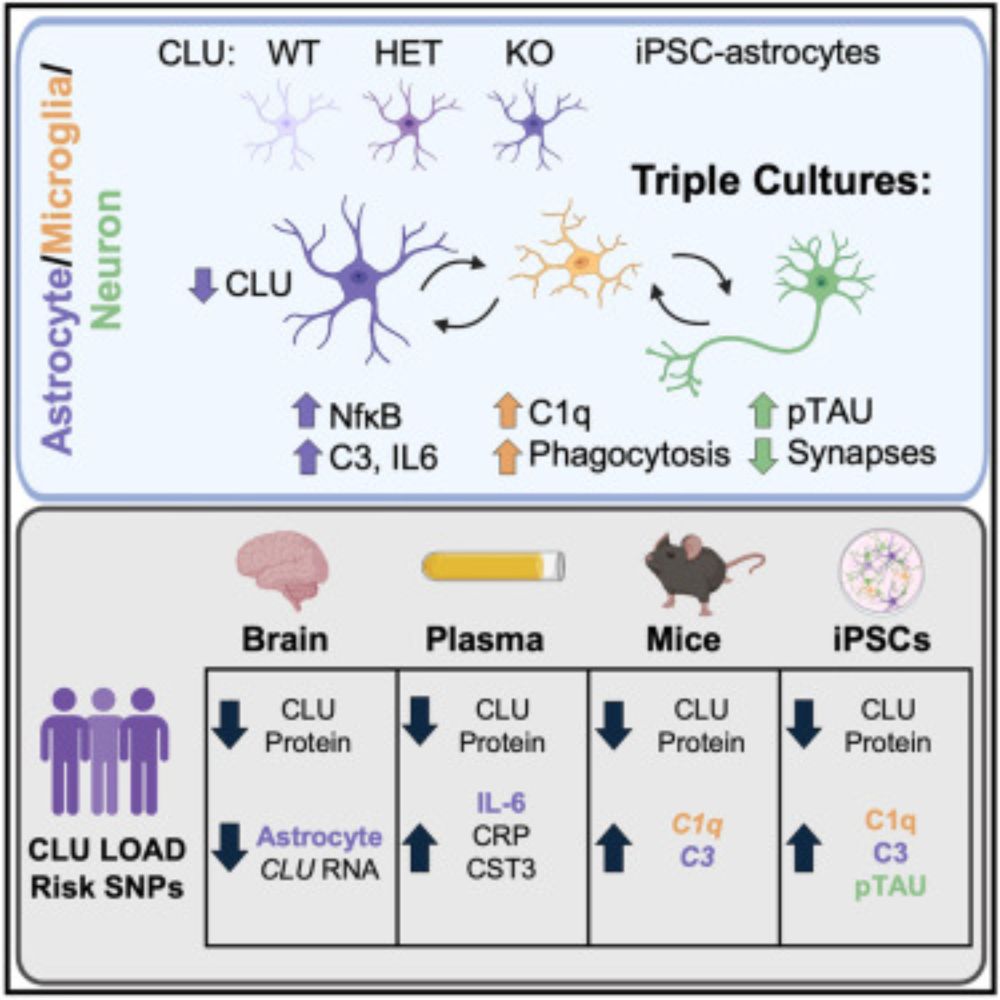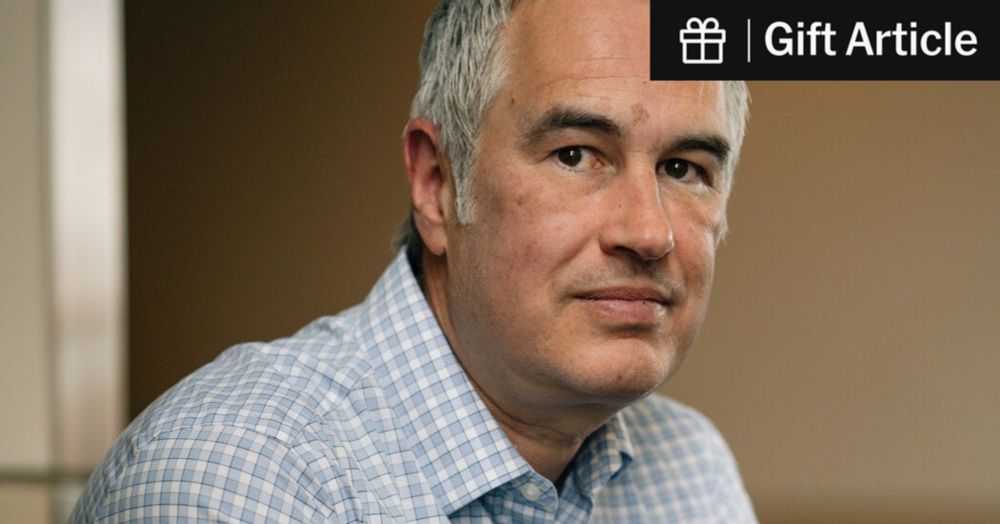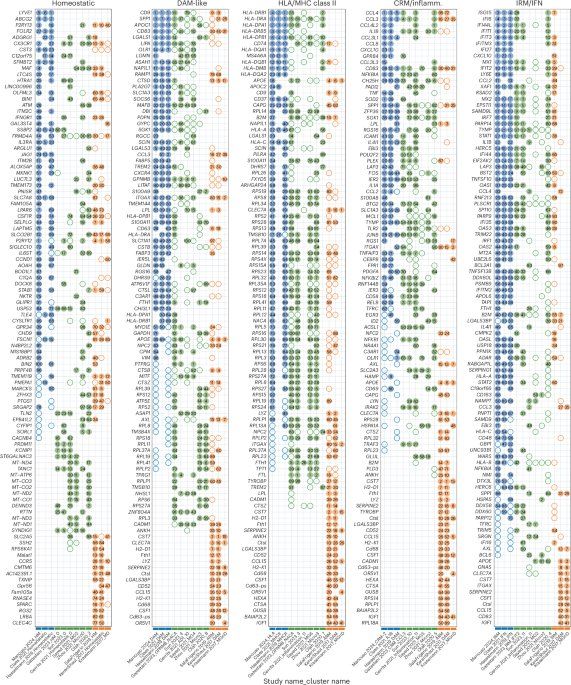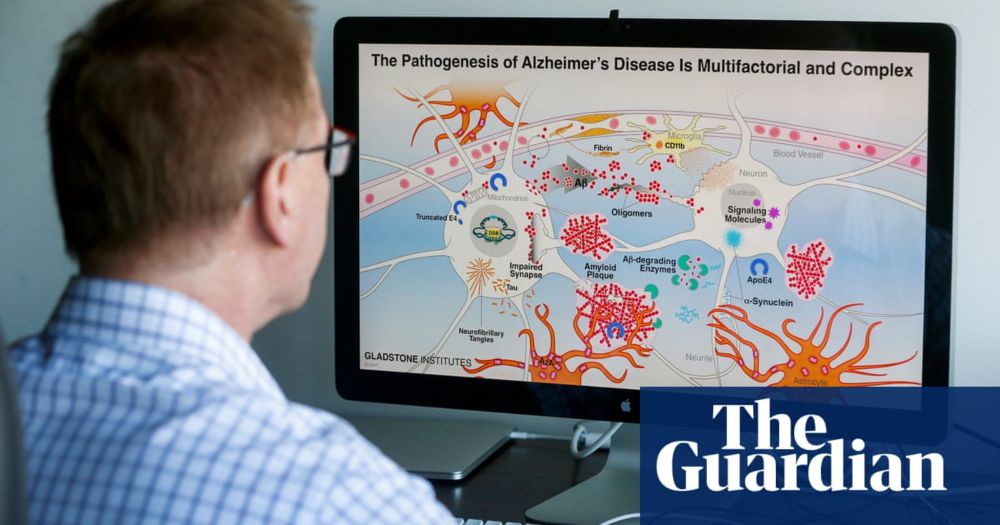Fascinating thread about the identification of one of the first genes with a clear role in human speech and language! Extra credit for those who dig in to find out why its called a "forkhead domain" 🧪
05.10.2025 17:32 — 👍 29 🔁 13 💬 1 📌 0

Peter and Bonnie McCausland Distinguished Chair in Neuroscience
Hey #neuroscience #neuroskyence we are hiring a Distinguished Chair of Neuroscience at the University of South Carolina (uscjobs.sc.edu/postings/190...)
We have a vibrant neuroscience community with extensive university support for research. I am extremely happy here. Come join us!
11.08.2025 12:34 — 👍 12 🔁 10 💬 0 📌 0
A major KI initiative to recruit new assistant professors with outstanding proposals in all areas of medicine, biomedicine and public health. We offer an amazing research environment, great colleagues and generous startup packages. Check it out and get working on your applications! (repost please!)
25.06.2025 10:08 — 👍 115 🔁 109 💬 2 📌 3
A nice read and ICYMI here is our cited paper from the end of last year on the microglia contribution to Familial British Dementia:
link.springer.com/article/10.1...
11.05.2025 09:04 — 👍 19 🔁 8 💬 1 📌 0
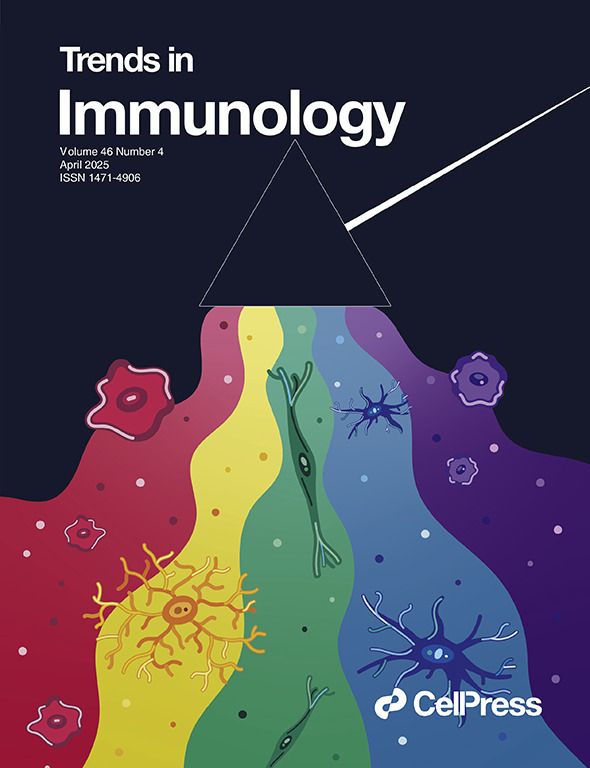
Journal cover of Trends in Immunology, Volume 46, Number 4, April 2025, ISSN 1471-4906. The cover features a striking design with a dark navy background and a triangular prism splitting light into a colorful spectrum below. The spectrum shows different immune cells illustrated in rainbow colors (red, yellow, green, blue, and purple bands) with microglial and immune cells visible throughout.
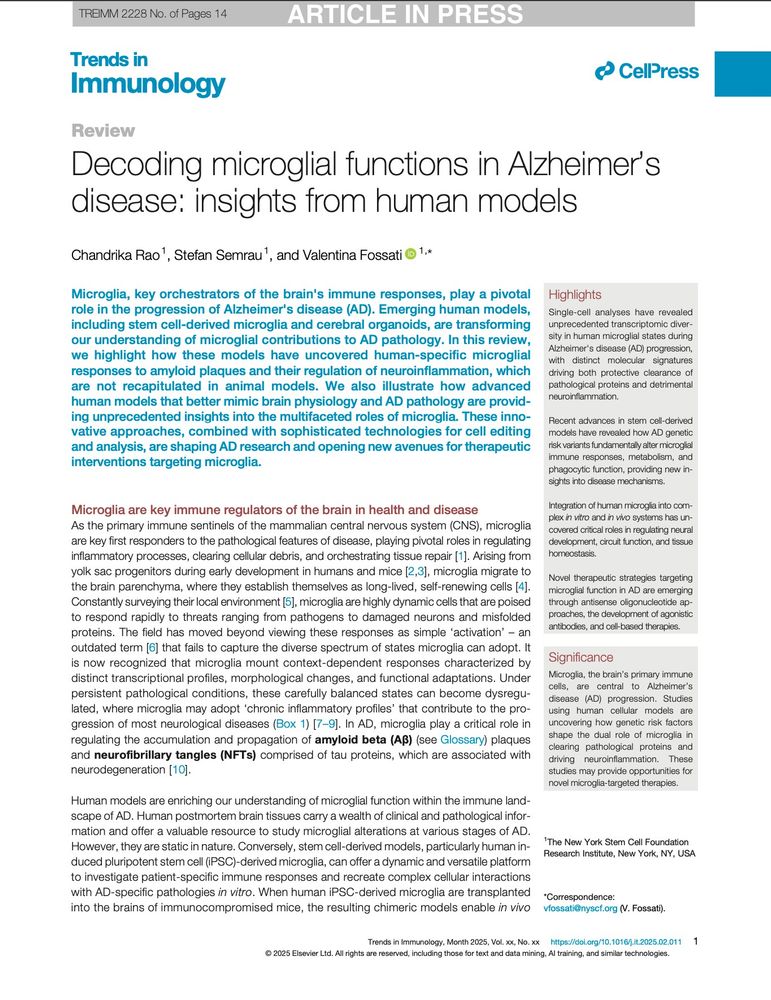
First page of review article entitled "Decoding microglial functions in Alzheimer's disease: insights from human models". Authors: Chandrika Rao, Stefan Semrau, Valentina Fossati. Journal: Trends in Immunology. Abstract: Microglia, key orchestrators of the brain's immune responses, play a pivotal role in the progression of Alzheimer's disease (AD). Emerging human models, including stem cell-derived microglia and cerebral organoids, are transforming our understanding of microglial contributions to AD pathology. In this review, we highlight how these models have uncovered human-specific microglial responses to amyloid plaques and their regulation of neuroinflammation, which are not recapitulated in animal models. We also illustrate how advanced human models that better mimic brain physiology and AD pathology are providing unprecedented insights into the multifaceted roles of microglia. These innovative approaches, combined with sophisticated technologies for cell editing and analysis, are shaping AD research and opening new avenues for therapeutic interventions targeting microglia.
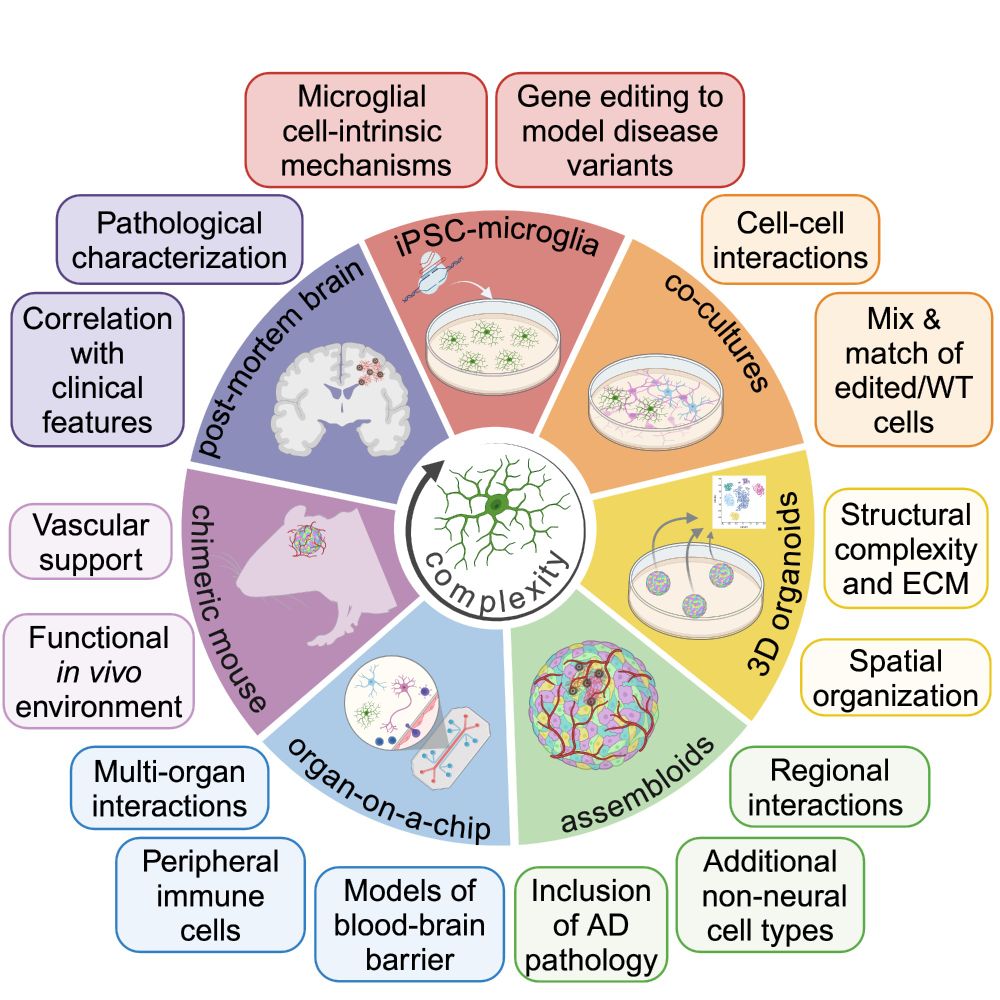
Circular diagram showing different human models for studying microglia in Alzheimer's disease. The center shows a microglial cell with increasing 'complexity' of human models as the central theme. The diagram is divided into colored segments representing different approaches: post-mortem brain (purple), iPSC-microglia (red), co-cultures (orange), 3D organoids (yellow), assembloids (green), organ-on-a-chip (blue), and chimeric mouse (pink). Each segment includes details on relevant research applications and methodology boxes, such as pathological characterization, gene editing, cell-cell interactions, and functional environments.
Our review on human models of Alzheimer's just made the cover! Great to have the opportunity to highlight the exciting advances being made towards understanding microglia's crucial role in neurodegeneration 🔎 🧠 Read here: authors.elsevier.com/c/1knwq5Eb0R.... Cover image credit: Giulia Mezzadri
10.04.2025 17:55 — 👍 7 🔁 0 💬 0 📌 0
@civia-aarhus.bsky.social oh no, sorry about that! Correct link here authors.elsevier.com/c/1knwq5Eb0R...
25.03.2025 02:43 — 👍 1 🔁 0 💬 1 📌 0
Very pleased to share our new review on human models of Alzheimer’s disease, and what they reveal about the role of microglia in neurodegeneration. At such a time, it was a great pleasure to celebrate the outstanding science emerging in this field 🙌🏽 authors.elsevier.com/c/1knwq5Eb0R...
24.03.2025 13:21 — 👍 10 🔁 3 💬 1 📌 0
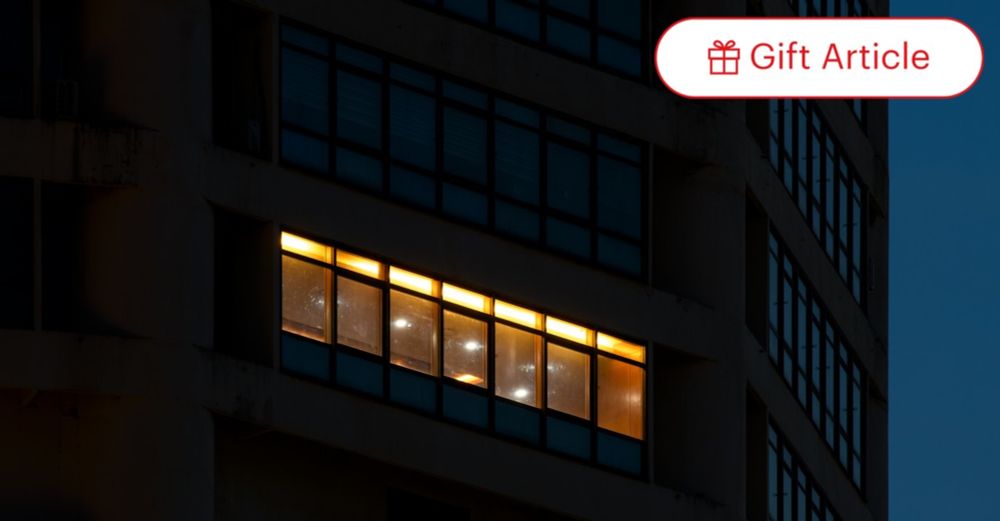
Inside the Collapse at NIH
Administration officials pressured NIH to avoid clear advice from the agency’s own lawyers to restart grant funding now.
By @katherinejwu.com
"The NIH... supported 99 percent of the drugs approved in the U.S. from 2010 to 2019. The agency has had a hand in “nearly all of our major medical breakthroughs over the past several decades,”
The NIH is in a struggle for its (and our) lives. This is existential to America:
27.02.2025 17:29 — 👍 817 🔁 493 💬 11 📌 28
Graduate admissions being put on hold because of the chaos...
22.02.2025 14:28 — 👍 127 🔁 95 💬 6 📌 2
This is important.
@avaskham.bsky.social is doing critical work here reporting details in @thetransmitter.bsky.social that I’ve seen nowhere else in reporting on the NIH / NSF funding crisis.
19.02.2025 13:14 — 👍 31 🔁 21 💬 1 📌 0

Scientific institutions have a long history of anticipatory obedience
Societies should learn from this and speak up to support inclusion
Excellent explainer by @philipcball.bsky.social on why now more than ever scientists need to resist the logic of "anticipatory obedience" www.chemistryworld.com/opinion/scie...
10.02.2025 11:33 — 👍 37 🔁 12 💬 3 📌 1
An essential, if not terrifying, thread summarising how US science has been brought to its knees in the space of just one week
28.01.2025 08:39 — 👍 0 🔁 0 💬 0 📌 0
V useful tips for new PIs and beyond. Should be mandatory reading for research group leaders at all stages! “A positive research environment is one where team members are empowered, recognised, have a clear career developmental pathway, and can contribute to impactful and reproducible research.”
14.01.2025 10:39 — 👍 3 🔁 1 💬 0 📌 0
@the-node.bsky.social do you have a current link please? Posted one doesn’t work!
28.12.2024 17:43 — 👍 0 🔁 0 💬 1 📌 0
Great example of transparency and useful guidance on peer review from @dev-journal.bsky.social
03.12.2024 15:26 — 👍 1 🔁 0 💬 0 📌 0
Welcome to the #devbiolwriteclub Bluesky Boot Camp! I’ll be posting here regularly with thoughts and exercises to help scientists become better writers. Let’s start by managing expectations: I will NOT help you write better. I WILL help you become a better writer. 🧵 1/10
02.12.2024 15:07 — 👍 86 🔁 40 💬 3 📌 2
Now more than ever the world should learn about the life and impact of @stanfordmedicine.bsky.social neuroscientist Ben Barres, the movie is underway! @atqmovie.bsky.social
23.11.2024 02:13 — 👍 188 🔁 38 💬 2 📌 0
Great post on using AI in academia! Use more effective prompts, get over “blank page syndrome”, and be prepared to iterate. Eager to try out some of the other use cases…
22.11.2024 19:29 — 👍 4 🔁 0 💬 0 📌 0
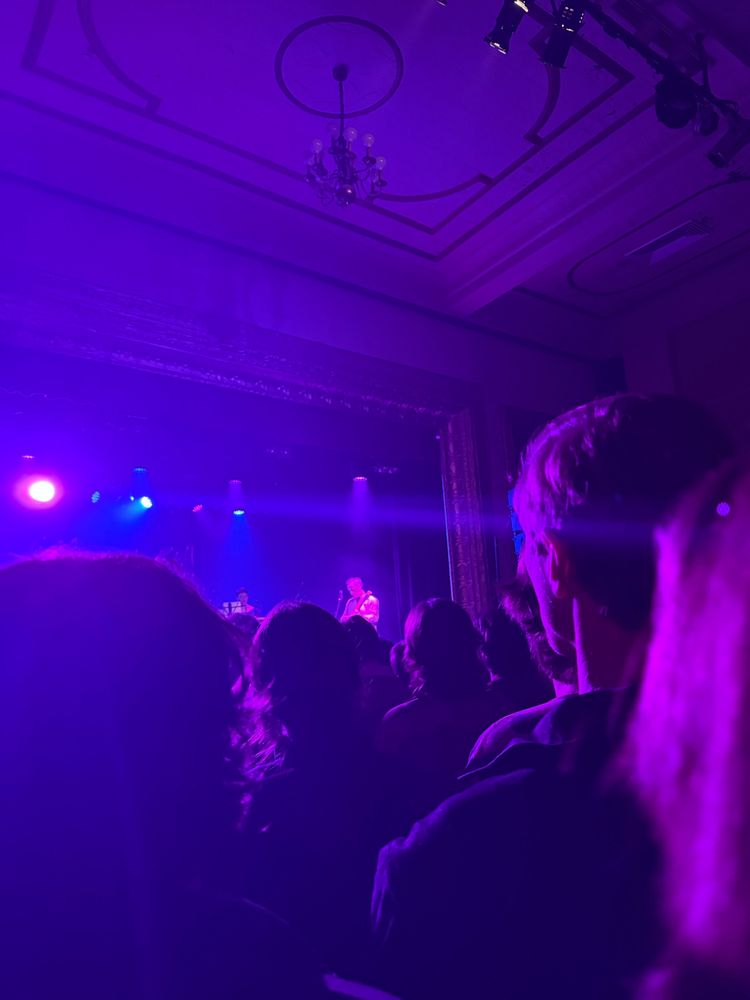
I enjoy to be totally enveloped by Elverum. New #mounteerie record release show in Brooklyn last night was the ideal world-wallowing show #ishouldbewriting
20.11.2024 23:29 — 👍 0 🔁 0 💬 0 📌 0
Interested to give this a go 🤔
18.11.2024 14:48 — 👍 1 🔁 0 💬 0 📌 0
This is a great, accessible read on the importance of studying sex differences in AD progression 🧪
17.11.2024 14:25 — 👍 2 🔁 0 💬 0 📌 0
@mancusorenzo.bsky.social thanks for starting! I’m working with iPSC-microglia + AD, pls could I be added :)
17.11.2024 13:47 — 👍 1 🔁 0 💬 0 📌 0
*Sobs in scientist on a Saturday night in mid-November*
17.11.2024 02:25 — 👍 6 🔁 0 💬 0 📌 1
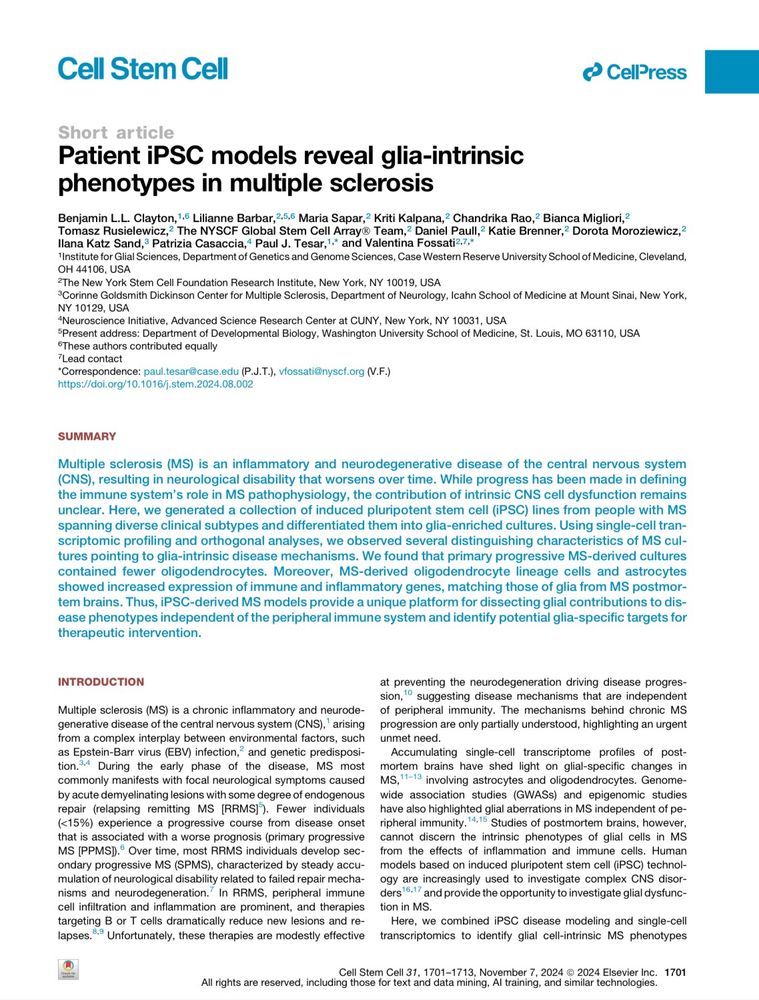
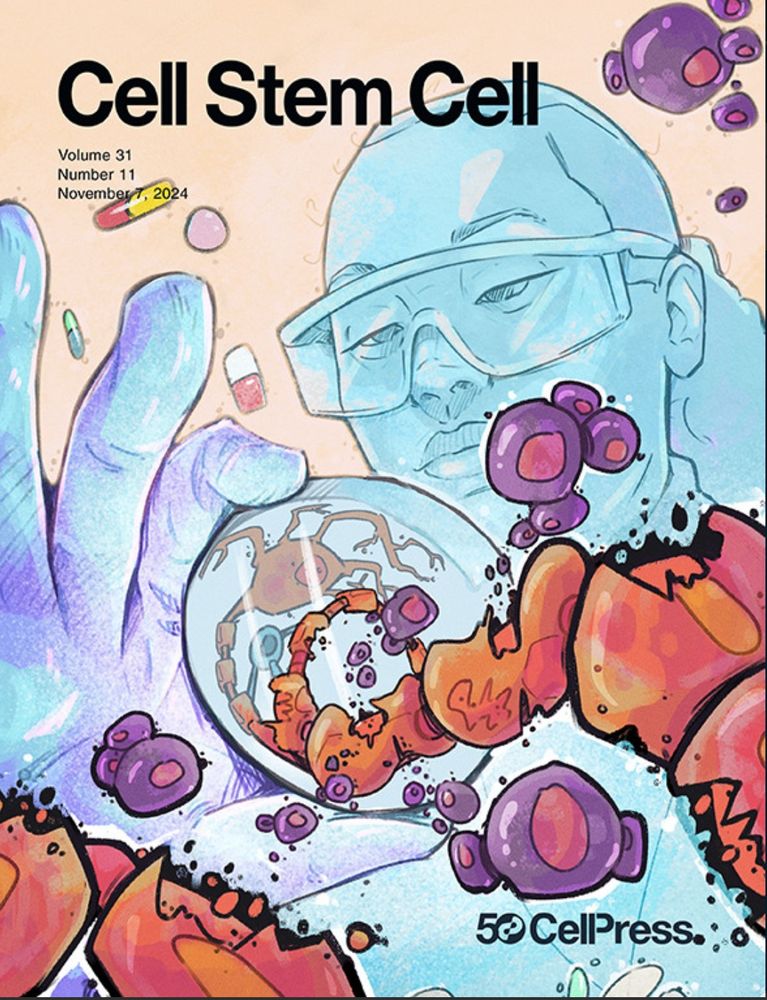
The image shows a scientist holding a petri dish with a neuron showing deteriorated myelin, symbolizing MS, while stem cells float around, highlighting their critical role in potential therapies. Cover art by DrawImpacts.
Excited to share that our lab’s paper is the cover story for the Nov issue of Cell Stem Cell, featured alongside a study from Ionescu, Nicaise et al.! 🌟 We show how iPSC-derived astrocytes and oligodendrocytes reveal glial-intrinsic immune phenotypes in MS #glia #stemcells 🧪 tinyurl.com/msglia
14.11.2024 13:19 — 👍 13 🔁 1 💬 0 📌 0
Thanks for starting! Pls could I be added too :)
14.11.2024 13:17 — 👍 1 🔁 0 💬 0 📌 0
Thank you! Pls could I get added :)
13.11.2024 15:25 — 👍 1 🔁 0 💬 1 📌 0
Disease genomics & molecular mechanisms; ME/cfs: http://decodeme.org.uk, SequenceME @ Edinburgh University. Views - my own. He/him.
Director of Language & Genetics at Max Planck Institute, Nijmegen.
Tracing the complex connections between genes, brains, speech & language.
Website: https://www.mpi.nl/people/fisher-simon-e
ORCID: https://orcid.org/0000-0002-3132-1996
Migrating on my own path. Cytoskeletal enthusiast with a love for mechanics, development, and biophysical approaches. | BWF CASI Fellow with Orion Weiner at UCSF | PhD Gardel lab at UChicago | HHMI Gilliam, Ford Predoctoral Fellow Alum |
Co-founder of Grant Witness: https://grant-witness.us
Epidemiologist. Attorney. Social, legal, and environmental determinants of health.
On Signal: sdelaney.84
Professor Emeritus (University of Manchester), writes on biology, history of science & French Resistance. Biography of Francis Crick, out in Nov 2025.
Link to publications: https://orcid.org/0000-0002-8258-4913
Group of passionate scientists unraveling the mysteries of neurodegeneration at Weill Cornell Medicine 🧠 | Tackling Alzheimer’s, FTD, PD & related diseases 🧬 | Focused on tau, innate immunity, & targeted therapeutics using iPSC & transcriptomics🔬
Join us as we discuss the latest stem cell research, policy, and news with field experts. Brought to you by @stemcell.com.
🔗 stemcellpodcast.com
Postdoc - https://bsky.app/profile/lukesjulson.bsky.social @ Albert Einstein College of Medicine | Ph.D. JHU SOM - https://bsky.app/profile/martinowk.bsky.social @ LIBD.
Assemblymember. Democratic Nominee for Mayor of NYC. Running to freeze the rent, make buses fast + free, and deliver universal childcare. Democratic Socialist. zohranfornyc.com
Group Leader @theCrick
🧬 Studying human embryo models to better understand development (she/her)
Molecular virologist, sewage sage and wastewater wizard.
Professor at University of Missouri, School of Medicine
Postdoc @LiGanLab @WeillCornell. Interested in innate immunity in aging and neurodegeneration. K99/R00 awardee, @_BrightFocus fellow.
NeuroGliascientist
https://jiaxinglilab.org/
Neuroscientist and developmental biologist studying myelin and neuron-glia interactions at Baylor College of Medicine
NMSS Career Transition Fellow
Leading Edge Fellow 2025
🧠Neuro PhD Stdt+NIH TL1 Fellow studying #OCD & #psychedelics @Cahill-Lab.bsky.social 🍄 | Bridging #MentalHealth research🤝lived experience | SciComm+Advocacy Podcast🎙️A Chat with Uma | #DisabledInSTEM | Lived Experience Council-One Mind🎗️| umarchatterjee.com
translational cell biologist| senior postdoctoral scientist | proteostasis & neuroinflammation | vrije universiteit brussel (VUB)
#immunologist working on a novel #TCellTherapy with Swarm Oncology -- PostDoc in @crgglasgow.bsky.social at University of Glasgow
She/Her🏳️🌈🏳️⚧️Views=mine
https://swarmoncology.bio/#about
Scientist | Collaborative Leadership Consultant for STEM Leaders and Organizations at the BridgUs Lab

